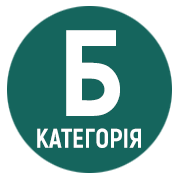BOHDAN HAWRYLYSHYN IN CAMPS FOR DISPLACED PERSONS IN GERMANY (1945–1947)
Abstract
This article highlights part of the life of the Ukrainian scientist and well-known philanthropist Bohdan Dmytrovych Hawrylyshyn (1926–2016), related to his stay in the DP camps in Germany after the end of World War II. An analysis of scientific works dedicated to the study of Ukrainian displaced persons in post-war Europe is provided. Characteristic features of their daily life in the camps, household arrangements, establishment of education for children and youth, cultural and religious life, medical care, etc. are highlighted and described. Based on the study of memoirs, interviews and preserved archival sources, the key moments of Bohdan Gavrylyshyn’s life in the period under study have been established. The author seeks to trace the important factors that influenced the formation of his personality, outlook and further life. Negative phenomena associated with camp life are also considered, in particular, the risk of repatriation to the Soviet Union, political struggle within the camp, poor nutrition, insufficient conditions for training, lack of funds, etc. Considerable attention is paid to the general picture of events, the number and prevalence of camps, living conditions in them, obtaining an education, possible options for the future fate of a young person after leaving the camp, etc. Among the moments that provided certain positive opportunities for young people, a large percentage of the Ukrainian intelligentsia was noted, who had the desire and willingness to open schools and thus complete secondary education, which would give them the opportunity to enter universities in different parts of the world. Bohdan Gavrylyshyn also took advantage of this opportunity, later entering the University of Toronto in Canada. During his stay in the camps, as a plastun, he joined the “Forest Devils” camp, with whom he maintained contact throughout his later life. At a more mature age, already retired, he devotes himself to Ukraine, in particular, he became the head of the Regional Plastov Council (2006–2008) and founded the Plast Development Fund in 2008.
References
2. Богдан Гаврилишин – Іван Дзюба. Діалог. Київ : Вид. Укр. Всесвіт. Координац. Ради та Респ. асоц. Українознавців, 1995. 159 с. (Додаток до журналу «Сучасність» 1995. Січень, ч. 1).
3. Віднянський С. Гаврилишин Богдан Дмитрович. Україна в міжнародних відносинах : енциклопедичний словник-довідник. Випуск 5. Біографічна частина: А–М / відп. ред. М. Варварцев. Київ : Інститут історії України НАН України. 2014. С. 88–89.
4. Гаврилишин Б. Залишаюсь українцем: спогади. Київ : Університетське видавництво «Пульсари», 2011. 288 с.
5. Гаврилишин П. Богдан Гаврилишин і Пласт. Літопис Волині. 2022. Вип. 27. С. 37–43.
6. Кокош А. Проблеми таборів ДіПі у повоєнній Баварії. Multidimensionality of Ukrainian-Polish cooperation: genesis, particularities and prospects : scientific monograph / science eds. T. Astramovich-Leik, Ya. Turchyn, O. Horbach. Riga, Latvia : «Baltija Publishing», 2022. С. 213–226.
7. Кубійович В. З демографічних проблем української еміграції. Сьогочасне й минуле. Ч. 1–2. Мюнхен; Нью-Йорк, 1949. С. 14–26.
8. Кузеля З. В далеку дорогу. Сьогочасне й минуле. Ч. 1–2. Мюнхен; Нью-Йорк, 1949. С. 3–8.
9. Лісові Чорти: їх життя і буття. Книга друга. 1945–2007. Ювілейний історично-мемуарний збірник у їх вісімдесятип’ятиліття. Львів; Нью-Йорк, 2010. 364 с.
10. Маруняк В. Українська еміграція в Німеччині і Австрії по Другій світовій війні. Т. І (роки 1945–1951). Мюнхен : акад. вид-во д-ра Петра Белея, 1985. 419 с.
11. Маруняк В. Табори Д. П. Енциклопедія українознавства. Словникова частина (ЕУ–II). Париж; Нью-Йорк, 1976. Т. 8. С. 3120.
12. Мудрий В. Нова українська еміграція та організація таборового життя. Сьогочасне й минуле. Ч. 1–2. Мюнхен; Нью-Йорк, 1949. С. 9–13.
13. Подобєд О.А. Культурне життя та повсякдення переміщених осіб і біженців з України у Західній Німеччині (друга половина 1940-х рр.) : дис. ... докт. іст. наук : 07.00.01. Національний педагогічний університет імені М.П. Драгоманова, Черкаський національний університет імені Богдана Хмельницького. Черкаси, 2018. 549 с.
14. Рудик С.Я. Переселення українських біженців і переміщених осіб до США та Канади після Другої світової війни: причини, особливості, наслідки (1945–1953 рр.) : автореф. дис. на здобуття наук. ступеня канд. істор. наук : спец. 07.00.02. «Всесвітня історія». Київ, 2003. 20 с.
15. Cтрільчук Л. Просвітницька діяльність української інтелігенції в таборах для переміщених осіб у західних окупаційних зонах (1944–1951 рр. Науковий вісник Східноєвропейського національного університету ім. Лесі Українки. Серія «Історичні науки». Луцьк, 2016. Вип. 3 (328). С. 69–74.
16. Стрільчук Л.В. Українські політичні біженці та переміщені особи після Другої світової війни : дис. ... канд. іст. наук : 07.00.02. Волинський державний університет імені Лесі Українки. Луцьк, 1999. 210 с.
17. Український табір ДП в Авгсбурзі. Спомини. Документи. Світлини. / упор. В. Сергійчук. Вишгород : ПП Сергійчук М.І., 2020. 402 с.
18. Шаповал Ю. ДІ-ПІ Енциклопедія сучасної України : у 30 т. / ред. кол.: І.М. Дзюба та ін. ; НАН України, НТШ. Київ, 2007. Т. 7 : Ґ–Ді. С. 693–694.
19. Юрій Л. «Родіна» і «скринінг» – Дамоклів меч таборів. Сьогочасне й минуле. Ч. 1–2. Мюнхен; Нью-Йорк, 1949. С. 54–68.



